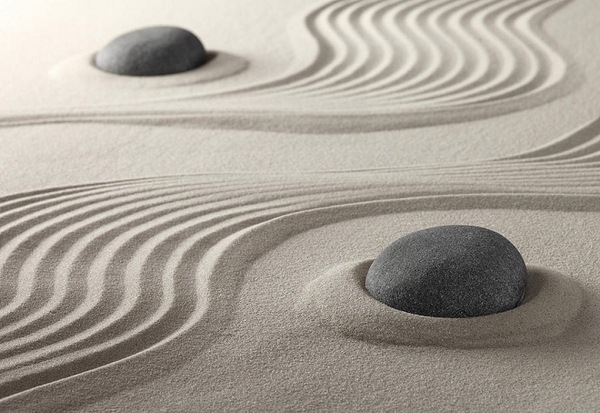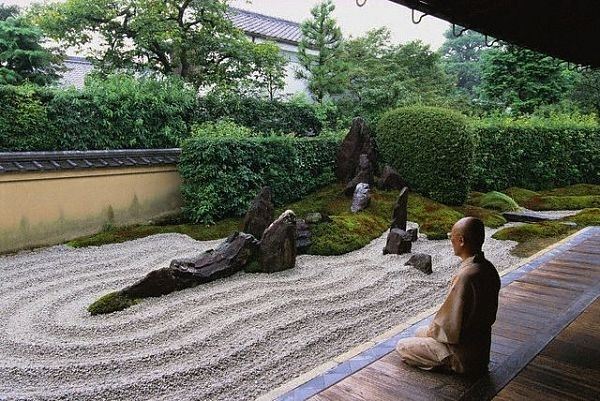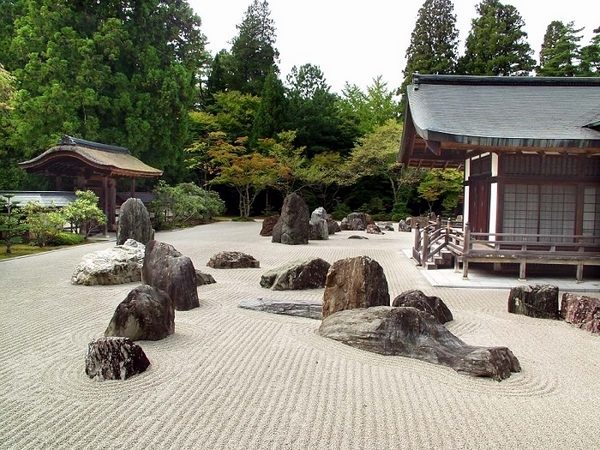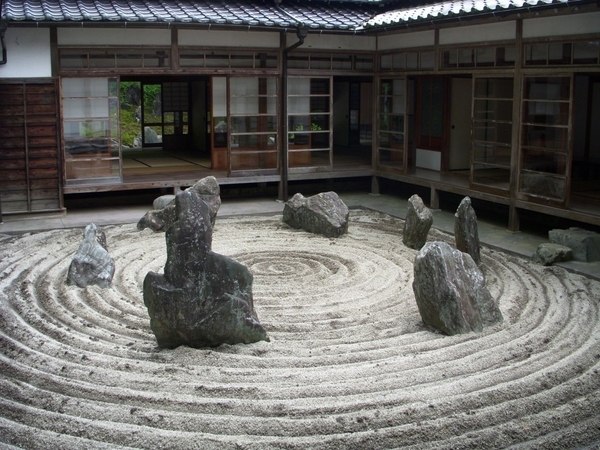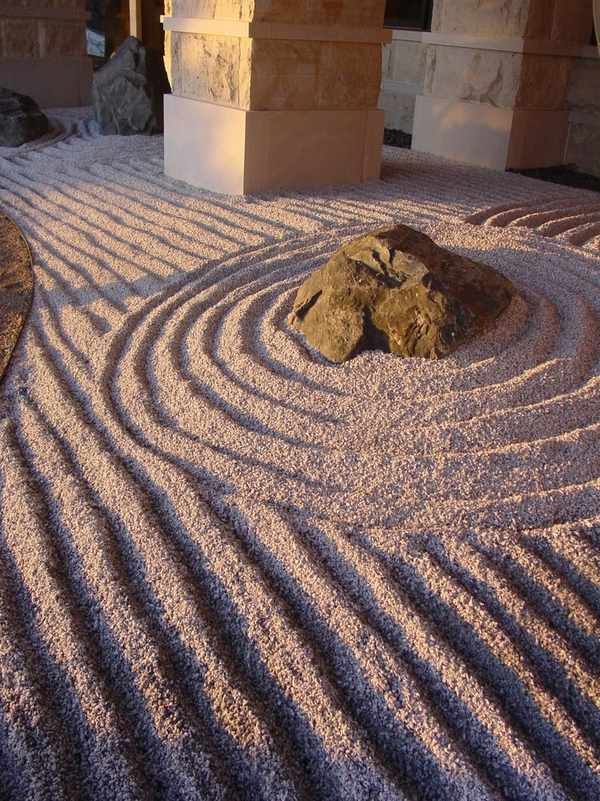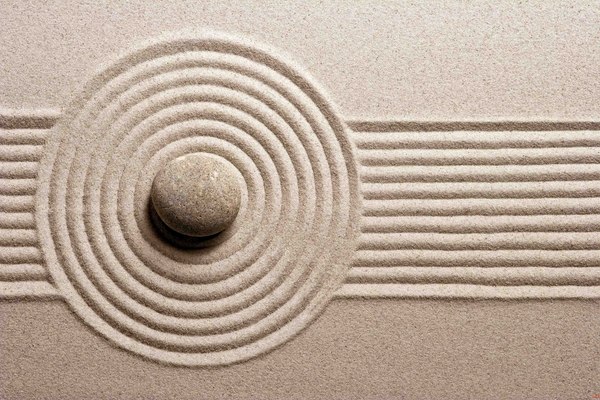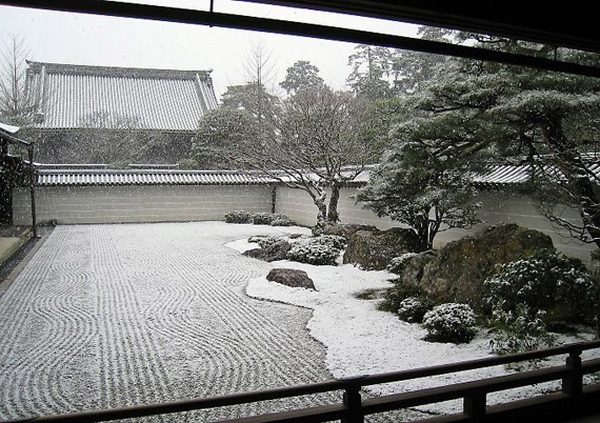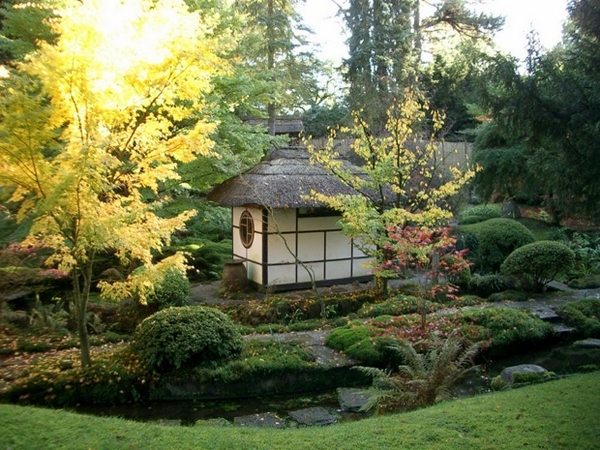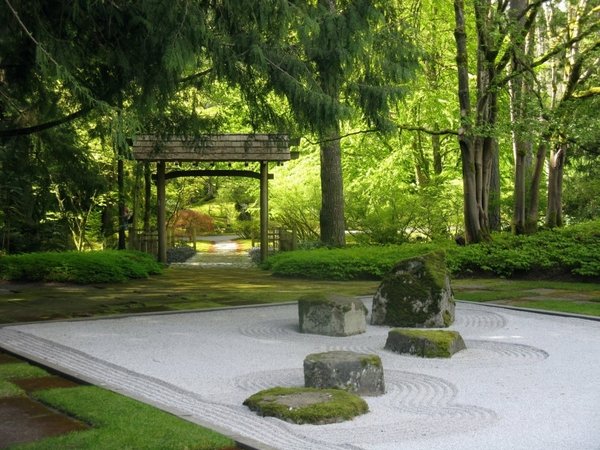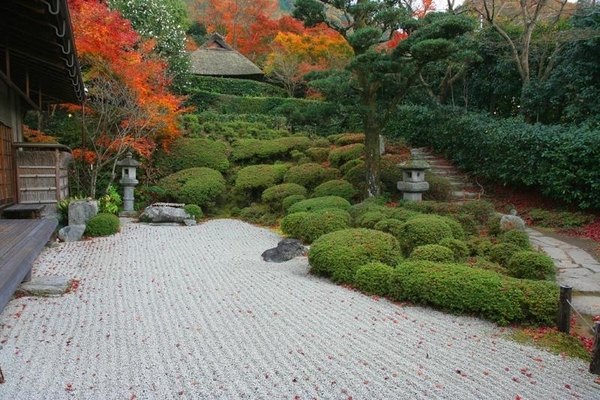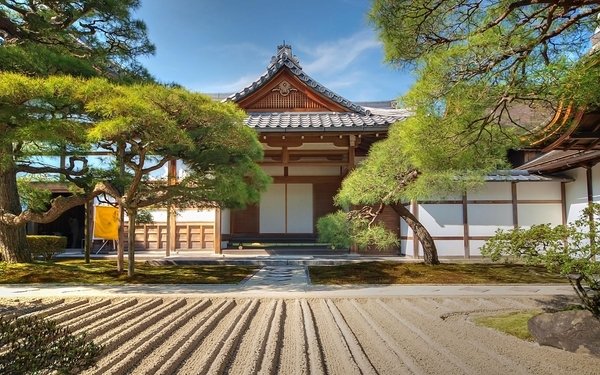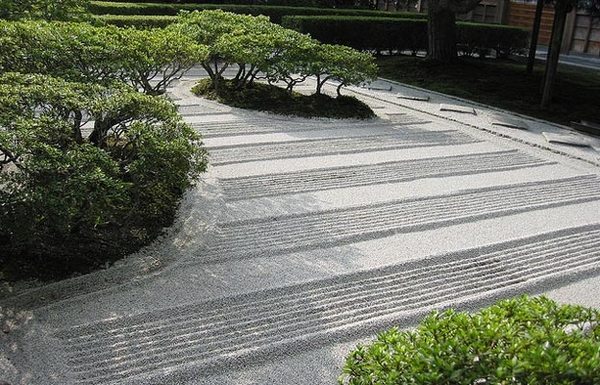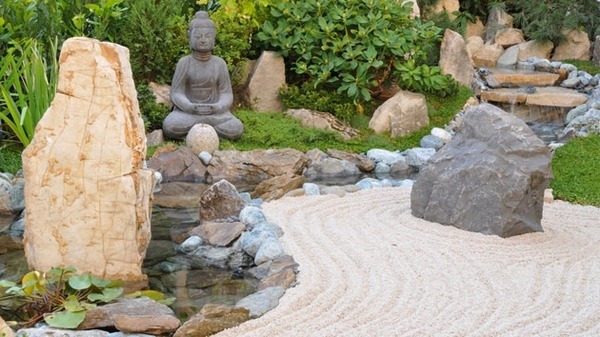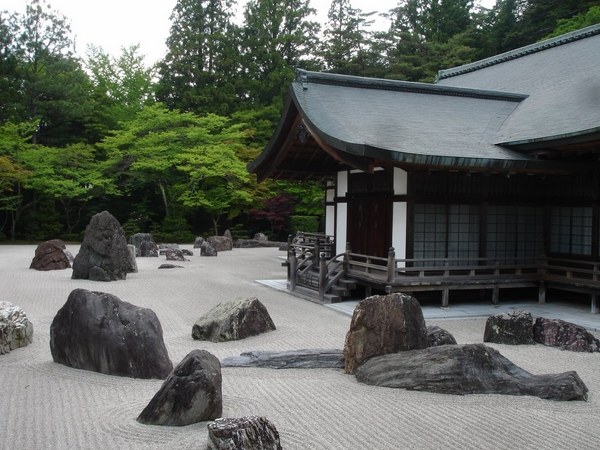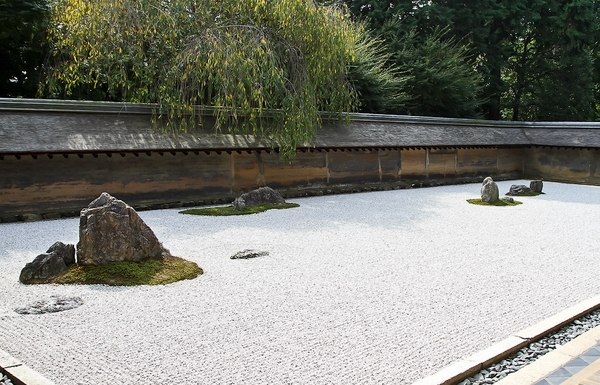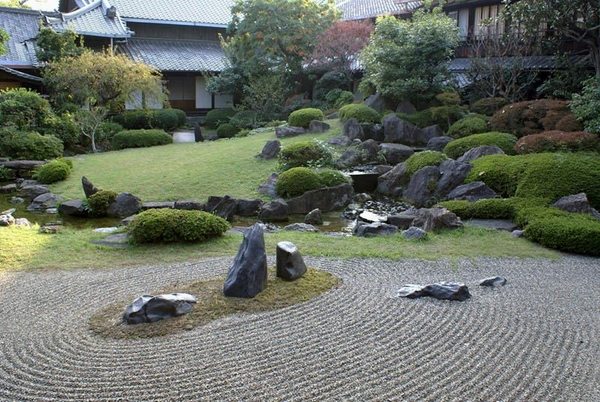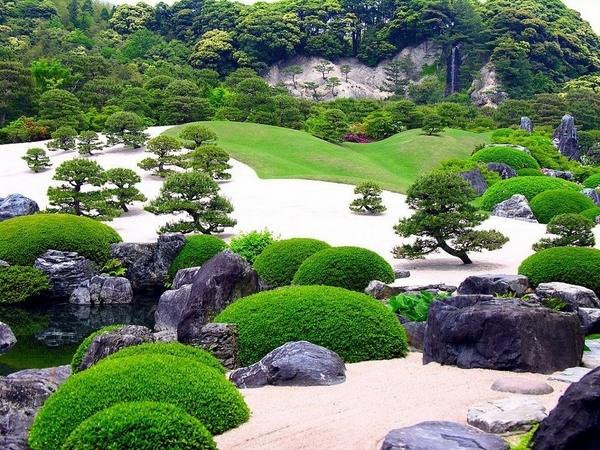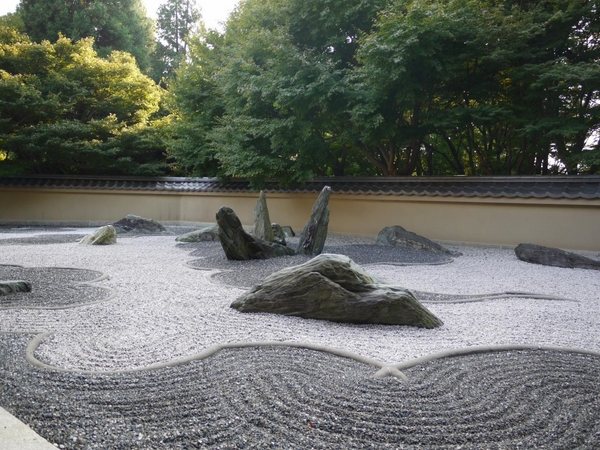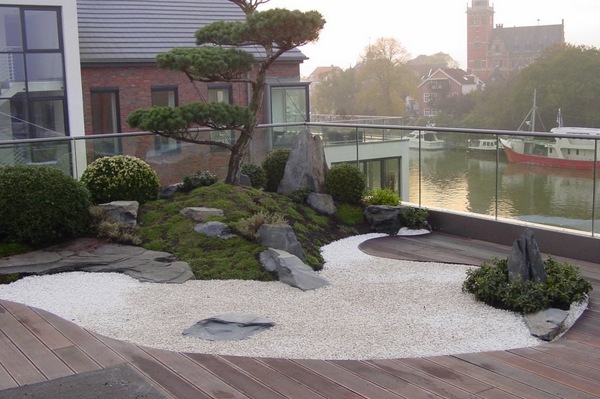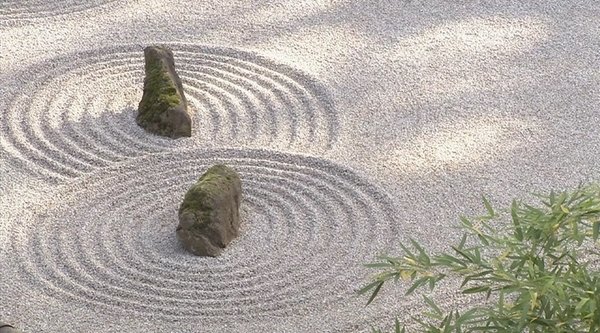Nowadays Zen garden design ideas bring peace of mind and tranquility to homeowners worldwide. What is a Zen garden? How to design one? What are the most important elements in Zen garden design ideas which make a beautiful outdoor space into an oasis of peace and tranquility? We shall look at the landscape of some of the most beautiful Zen gardens around the world. To begin with – what is a Zen garden? In ancient times those gardens were usually temple gardens in Japan, gardens of the Emperor or the nobles, designed for recreation, contemplation and meditation. The different design styles of Japanese gardens reflect the purpose of the garden design but there is always one common line –all roads lead to enlightenment through meditation, contemplation, and reflections. The external harmony is only a way to the soul and the Universe. The philosophy of Zen, the doctrine of Buddhism, is the way that leads to enlightenment and understanding the reality of the world around us.
Zen garden design ideas – the origin of the landscape design
Zen garden design ideas were inspired by the landscape of Chinese gardens and appeared back in the 14th-16th century. Zen gardens are designed with carefully selected elements – rocks, water features, sand, garden architecture, bridges, plants, etc. Through the ages Japanese gardeners created their own visual aesthetics and styles of designs based on the principle of the uniqueness of all elements of the composition. Japanese rock gardens, known as dry landscape, appeared and some of the elements were replaced and at first glance they appear as a flat area covered with sand or pebbles and chaotically arranged groups of uncut stones. Actually, the arrangement of stones in groups reflects the rules and concepts of Zen Buddhism and often rocks are arranged in three in accordance with the Buddhist triad – a tall vertical rock surrounded by two smaller rocks, symbolizing Buddha and his two attendants.
Originally created in a small area, a Japanese garden should be filled by contrasts. It combines light and dark and the design combines different structures and textures in the composition, opposition of vertical and horizontal forms. Rock gardens as the phenomenon of philosophy combine motion and stillness and the selection and arrangement of the rocks is the most important part in the landscape of a Japanese rock garden. Rocks have to be placed in a very specific way, following very strict rules so that the owner will not suffer misfortunes.
Garden rocks in a Zen garden design can teach silence, patience, calmness, contemplation, and each stone has its own soul, its character, its purpose. Whether vertical, low vertical, arching, reclining, or flat, the stones have to be arranged so that their best side is exposed.
How to arrange the rocks in a garden?
Although symmetry is a basic rule in Japanese style designs, in Zen garden design ideas rocks are almost never placed in a row or in a symmetrical pattern. Rocks are arranged in groups, sometimes individually and represent mountains, water elements, islands, rivers, waterfalls, etc. When choosing the rocks for a Zen garden, it is important that they differ in color, shape and size, and that the grans in the rock run in the same direction. Bright colors should be avoided so that the viewer is not distracted. When rocks are surrounded by other elements, the main goal of the garden design is to mimic a natural landscape and create a complete harmony with nature and climate of the area, so it advisable to use the vegetation and rocks, characteristic for the particular place.
Gravel or sand are used as a decoration of the rock garden and are rakes to symbolize the waves or rippling water. Raking the gravel in different patterns helps to the concentration and creating the perfect lines is a serious and difficult task.
A great advantage of Zen gardens is that they are incredibly flexible and can be created in any type of climatic conditions and can be designed on a large or a tiny site. You can change the look of a Zen garden every day or leave it unchanged for years. The tradition and philosophy of the rock gardens does not include plants, water, even moss, as the Japanese believe that the rocks surrounded by the wavy lines of gravel are sufficient for an immersion in the inner world of man. The rocks have to be an odd number and they have to be arranged in a way that it is impossible to determine their beginning and end. Many people find the idea of a garden without plants as unacceptable, so if you are one of them, you can opt for bonsai trees. Bonsai trees require careful maintenance, lighting, watering, etc.
Zen garden design ideas – tea and promenade gardens
Japanese rock gardens are widely known as Zen gardens, but there are other types based on the Zen philosophy. For example the tea gardens which were created in the 14th-16th century for the Japanese tea ceremony where except the tea house, the main element is the path leading to the teahouse in preparation for meditation and the deep meaning of the tea ceremony. A particular characteristic feature of tea gardens is that the path is kept moist and usually there are no bright flowers which can distract the man.
Promenade gardens appeared later and are designed to offer a series of spectacular scenes and landscapes. They include water features, carefully selected trees and plants which are chosen for the appearance so that the overall harmony and tranquility is balanced. Water, as an element of the Zen gardens can be in the form of a garden pond, or miniature waterfalls as the sound of water isolates any external sounds and creates an atmosphere for meditation.
Trees, plants and moss are used with caution. Pine trees are most commonly used because they are a symbol of longevity. Bridges and walkways are always designed very carefully, because they have to reveal the garden rocks and to give the viewer a different perspective.

